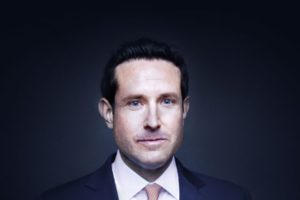
Crestview Partners recently moved into an early phase of a succession plan that will transition the firm into the next generation of leadership. Buyouts recently chatted with Brian Cassidy and Alex Rose, who were promoted to co-presidents, and Barry Volpert, who will continue in the roles of CEO and CIO, about the future of the firm.
Cassidy, 47, who joined the firm in 2004, continues to lead the firm’s media strategy and Rose, 43, who joined in 2006, has taken over sole leadership of the industrials strategy.
How does this move into leadership change your role at the firm?
Alex Rose: Parts of the job you’re always preparing to do … if you act like a leader, think like a leader, behave like a leader all the way through, it’s more natural to step into those responsibilities. Brian and I have long been members of the investment committee, partnership and management committee discussions. We’ve also been leaders in the organization by leading our respective businesses. It’s all part of the journey to get to where we are, and becoming co-presidents of the firm for sure is another element of that.
We’re not going to lose sight of our day jobs; we continue to run our verticals with Brian continuing to lead media and me continuing to lead industrials. Over the years, we’ve been taking increasing leadership roles in many aspects of the firm, and this kind of formalizes it.
How did you prepare the LP base for this transition?
Barry Volpert: Brian and Alex have strong relationships with our management teams and, increasingly, our investor base. In the old world where we had annual meetings, or meetings in person, Brian and Alex each led discussions in their respective verticals. They were regular speakers at our annual meetings and key participants in all LPs updates and so forth. They were frequent participants in travel squads as well as meeting with investors and prospective investors, they’re both owners of the management company and well known to the LPAC.
What kind of opportunities are you seeing in the market?

Brian Cassidy: We went into the pandemic with our portfolio in pretty good shape. That allowed us to play offense while many other firms were playing defense. We had a very active year; we invested $850 million of capital in four new investments and 17 follow-on investments across our funds.
One of them was an add-on investment in ICM, a talent agency business, to facilitate the transformational acquisition of Stellar Group, the world’s largest soccer agency. That allowed ICM to expand into sports and broaden its footprint in Europe, two of our major strategic priorities. The downturn helped us get the deal done on likely more attractive terms.
On the new investment side, we targeted the travel/leisure, out-of-home entertainment and live events sectors. We invested in Viad, a public company that operates through two businesses called Pursuit and GES. Pursuit is a collection of attractions, lodges and sight-seeing tours at iconic locations. GES is a trade show and live events company. Their business was severely impacted by the pandemic. They needed capital for liquidity and also a partner to help them negotiate more favorable credit agreement amendments. We invested $135 million as part of a rescue financing in a preferred convertible structure.
How did the pandemic lock-down impact your strategy?

Rose: I don’t think the pandemic turned the industrial sector completely on its head. We still see a number of opportunities taking businesses with more traditional industry 3.0 revenue models, selling a product or a service, but where there are untapped data driven industry 4.0 opportunity sets. There are situations where we don’t feel that the management teams are getting after it as aggressively as they should, and that creates opportunity since that part of the marketplace in industrials is evolving rapidly. So we’ve looked at businesses that are going through digital transformations and are focused on investing behind those models.
We do our best work being very thesis-driven. For example, we’ve been investors in the automation space for years and we continue to be big believers in the need for continued automation in the market. We spent 2020 looking for what comes next in that sector. A lot of the businesses we find attractive are owned by a first or second owner who have reached their limitation for growth without help. Those are the situations we love being able to step in and bring out that inflection through our experience and ability to supplement what that management team knows and can do on their own.
Another example is in the middle market, a lot of industrial businesses are regional but would benefit from becoming global enterprises. We love those opportunities.
What will the firm look like a decade from now?
Cassidy: When Barry and Tom started Crestview 16.5 years ago, they were very focused on establishing a middle market private equity firm with a value orientation that delivered superior returns for investors, maintained a culture of teamwork and respect, and solved complex problems for founders, owners and management teams. Those are the three core tenets of Crestview, and that’s not going to change.
We’ve had the opportunity to expand into other product areas, but that’s a pretty high bar for us. We don’t want to go into different business lines just to add assets under management. We’re very focused on what we do.


 If you do not receive this within five minutes, please try and sign in again. If the problem persists, please
email:
If you do not receive this within five minutes, please try and sign in again. If the problem persists, please
email: